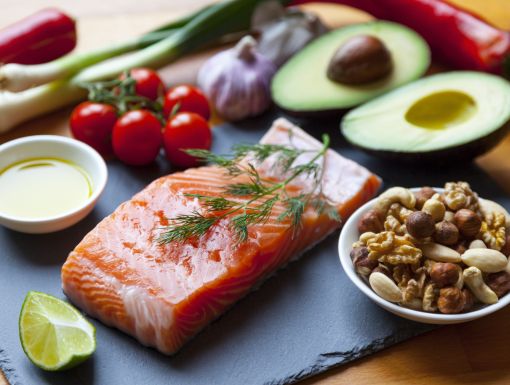
Best (and Worst) Picks for Cooking Oil
With so many oils to choose from, selecting the best option can be intimidating. To add to the confusion, the answer of which oil is best can change, depending on what and how you’re cooking. To help make things easier than ever, we’re giving you the rundown of four top oils to use and when to use them, adapted from The Eat Fit Cookbook.
Extra Virgin Olive Oil
Nutritional profile: High in monounsaturated fats, extra virgin olive oil is rich in polyphenols, compounds with an anti-inflammatory effect that help protect our body’s cells from oxidative stress.
Flavor: Extra virgin olive oil comes from the first pressing of the olives, giving it the boldest, richest flavor of all types of olive oil.
How to use it: Extra virgin olive oil has a low smoke point, so it’s best used for drizzling, dipping and recipes that don’t require much heat, like marinades, sauces, dips, salad dressings and even popcorn.
Avocado oil
Nutritional profile: With 70% monounsaturated fats, avocado oil has a nutritional profile very similar to that of olive oil.
Flavor: Slightly fruity with a very mild avocado flavor.
How to use it: Avocado oil has a high smoke point, which means it’s great for high-temperature cooking, like stir-frying, grilling and sautéing. It has a pretty green hue and a mild, pleasant flavor, making it a great choice for drizzling or dipping as well as for salad dressings, soups, sauces and dips.
To schedule a nutrition consult, whether virtually or in-person, contact us at nutrition@ochsner.org or call us at 504-733-1600.
Extra light olive oil
Nutritional profile: Rich in hheart-smart fats, with 70% monounsaturated fat.
Flavor: Especially light in color and flavor, extra light olive oil really has no significant flavor profile at all.
How to use it: With a high smoke point, extra light olive oil can be used for baking, sautéing and frying. Think of extra light olive oil as your new all-purpose cooking oil, taking the place of omega-6 rich vegetable oils like corn or safflower oil.
Coconut oil
Nutritional profile: Coconut oil contains over 50% medium chain triglycerides (MCTs). Unlike most fats, MCTs appear to be more easily burned as energy and less likely to be stored as fat. MCTs have also been shown to increase metabolism slightly and help us feel fuller faster. Coconut oil may be beneficial for cholesterol levels, especially when used in place of animal-based saturated fats like butter.
Flavor: Coconut oil has a distinctly sweet, nutty flavor.
How to use it: Solid at room temperature, coconut oil is an easy one-to-one substitute for butter. Use it for low-to-medium heat dishes, adding it to roasted vegetables, soups and curry dishes and use it instead of butter to fry an egg.
Editor’s note: Registered dietitian Molly Kimball offers brand-name products as a consumer guide; she does not solicit product samples nor is she paid to recommend items. This originally appeared on WGNO’s “Love It, Like It, Hate It” segment.



